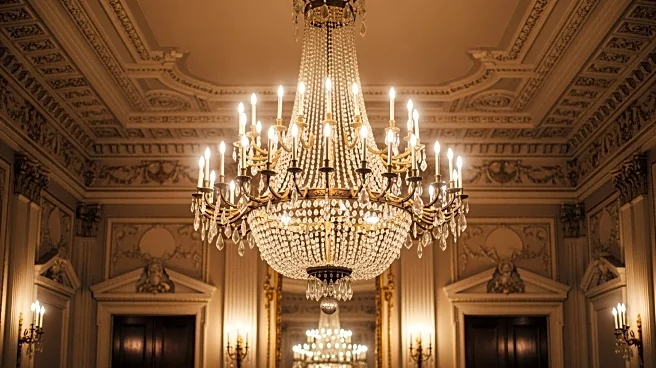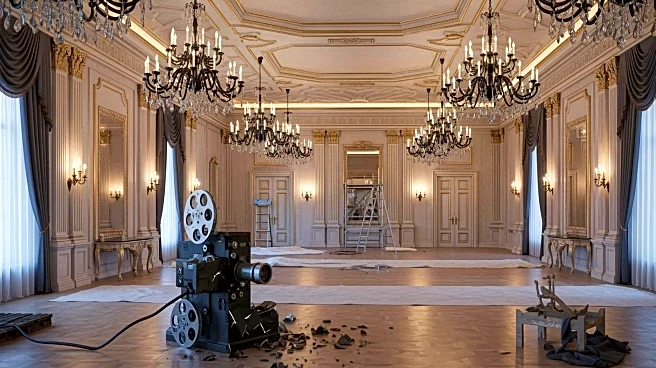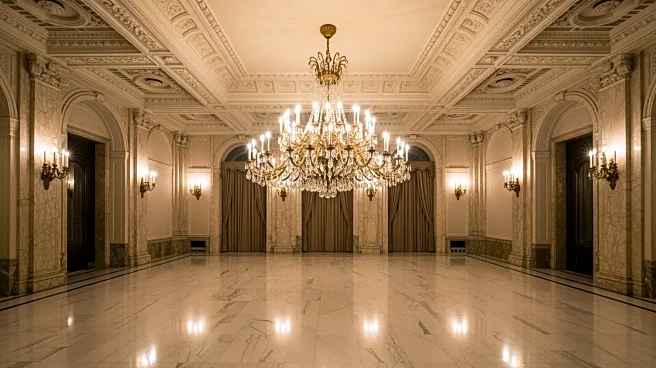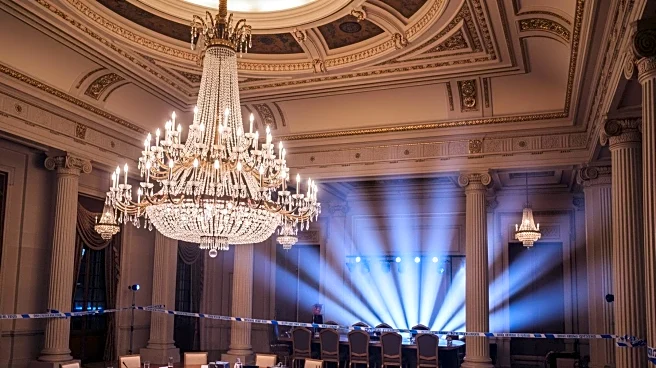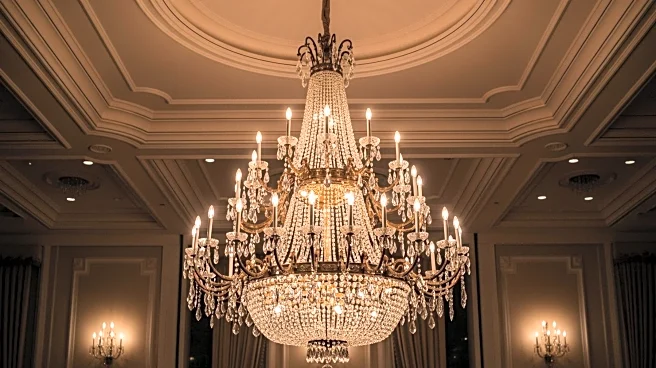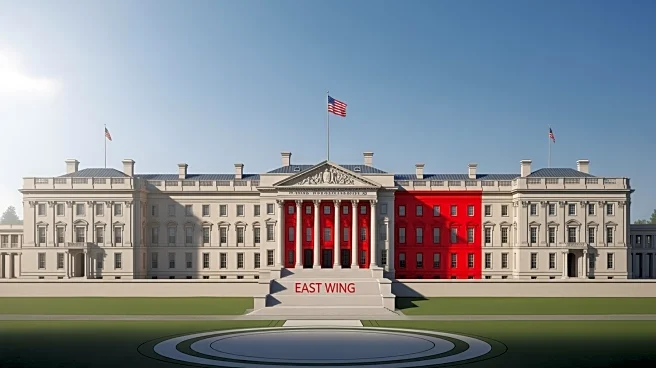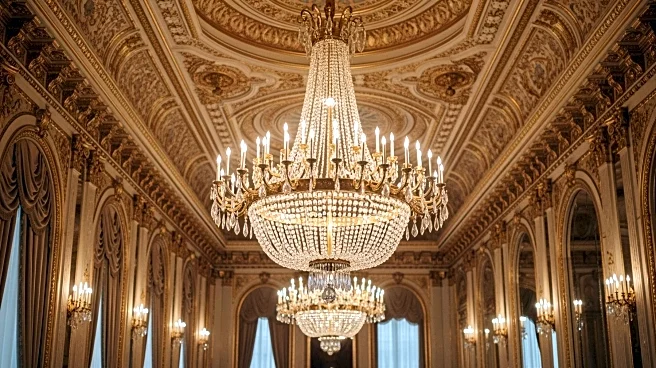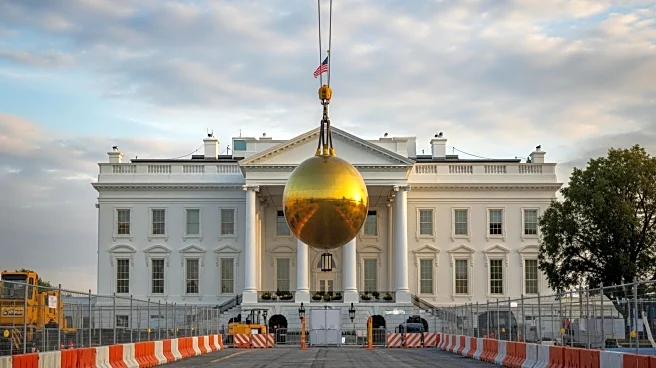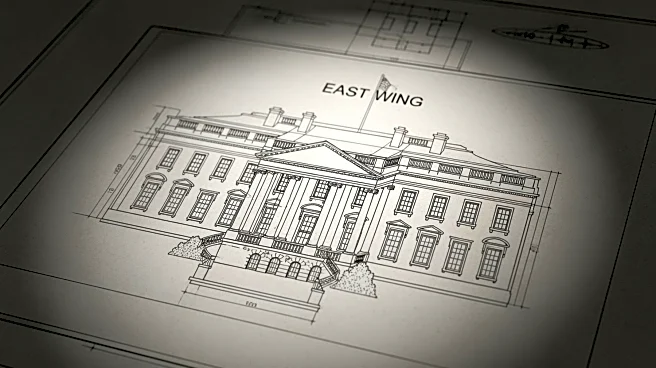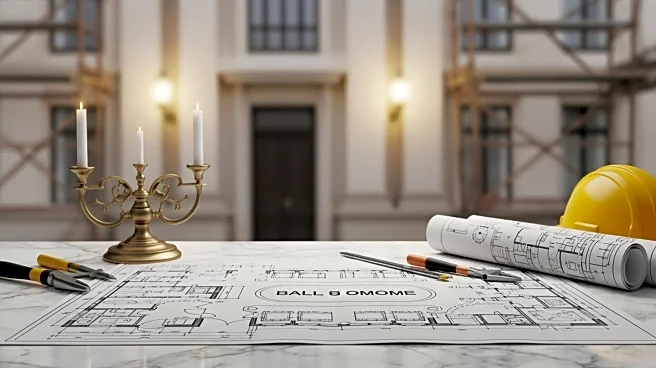What's Happening?
The demolition of the White House's East Wing to make way for a new ballroom has ignited a debate over historical preservation and modernization. President Donald Trump is spearheading the project, which
aims to create a 90,000-square-foot ballroom capable of hosting 999 guests. While some view the project as a necessary update to accommodate large events, others criticize it as a symbol of Trump's disregard for historical norms. The project bypassed traditional review processes, which preservationists argue would have delayed or prevented its completion. The ballroom is funded by private donors, including major corporations, raising concerns about potential conflicts of interest.
Why It's Important?
The construction of the new ballroom at the White House underscores the ongoing tension between modernization and historical preservation. The project highlights the challenges of updating national landmarks while maintaining their historical integrity. The use of private funding for a public project raises ethical questions about the influence of corporate contributions on government decisions. The debate also reflects broader issues of regulatory processes and the balance between efficiency and thorough oversight in public projects.
Beyond the Headlines
The ballroom project may have long-term implications for how future administrations approach renovations and updates to historically significant buildings. The controversy could lead to increased scrutiny of private funding in public projects and prompt discussions on the need for regulatory reforms. The project also serves as a case study in the complexities of balancing modernization with preservation, a challenge faced by many historical sites across the country.
